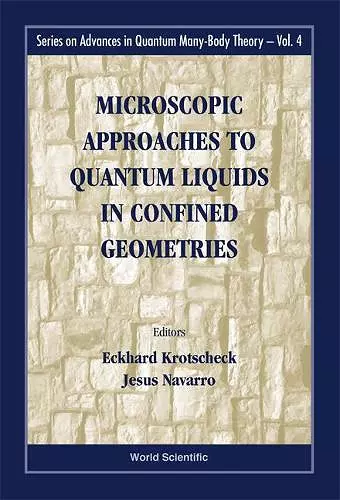Microscopic Approaches To Quantum Liquids In Confined Geometries
Eckhard Krotscheck editor Jesus Navarro editor
Format:Hardback
Publisher:World Scientific Publishing Co Pte Ltd
Published:23rd Dec '02
Currently unavailable, and unfortunately no date known when it will be back

Quantum liquids in confined geometries exhibit a large variety of new and interesting phenomena. For example, the internal structure of the liquid becomes more pronounced than in bulk liquids when the motion of the particles is restricted by an external matrix. Also, free quantum liquid droplets enable the study of the interaction of atoms and molecules with an external field without complications arising from interactions with container walls.This volume assembles review articles that present the status of frontline research in this field in a manner that makes the material accessible to the educated, but non-specialist, reader. The articles focus on the many-body aspects of the theory of quantum liquids in confined geometry. Research is in the very satisfactory situation where several accurate approaches are available that allow one to describe these systems in a quantitative manner without modelling uncertainty and uncontrolled assumptions. For example, dynamic situations of direct experimental relevance can be modelled with high accuracy.The theoretical approaches discussed are simulation methods, those semi-analytic many-body techniques that have proved to be successful in the field, and phenomenological density functional theories. Each of these methods has strengths and weaknesses, and it is hoped that this collection of comprehensive review articles in one volume will provide sufficient material for the reader to intelligently assess the theoretical problems, and the physical predictions of the individual theories.The collection is supplemented by several articles that highlight specific experimental issues (such as neutron or atom scattering, thermodynamics, phase transitions and magnetic properties), discuss the present directions of experimental research, and formulate questions and challenges for future theoretical work.
ISBN: 9789810246402
Dimensions: unknown
Weight: unknown
436 pages